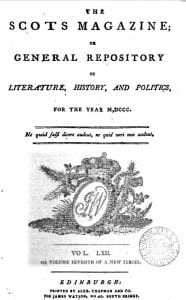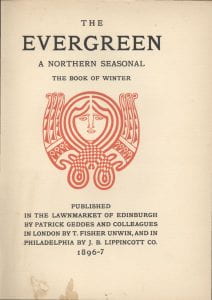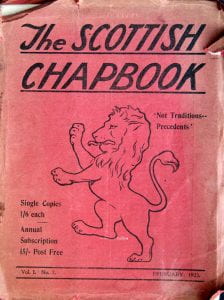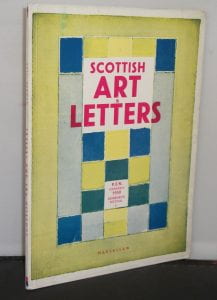The focus of this network begins in the 1960s, but there is a much deeper history of Scottish magazines. Charlotte Lauder takes a longer view.
Modern Scottish magazines have a long history. We can start with the Scots Magazine, established in 1739 and still published today.[1] Yet, beneath this remarkable longevity lies a fractured history which makes the Scots Magazine a convincing simile for the development of modern Scottish magazines in general. In fact, the Scots Magazine has been out of print for much of its life – between 1826 and 1887, and from 1893 to 1922. Its most stable period of publication has only been since 1927. Similarly, the magazine has flip-flopped between a variety of proprietors and political allegiances, including the Free Kirk of Scotland (Liberal), the St Andrew’s Society of Glasgow (Unionist-nationalist), and D. C. Thomson & Co. (Unionist).
Although prominent during the time period covered by this research network, the Scots Magazine is not a title I’d consider to be within its lens of inquiry. But it is still a magazine produced in Scotland and it emphasises many of the issues under evaluation by this network: how do magazines construct or express Scottish national identity? How does politics influence a magazine (and vice versa)? How important are the people behind the press? Ultimately, what do magazines do (and not do)?
These questions have been somewhat neglected, particularly outwith the 1920-40 period. While studies of these magazines remain important, and the work of Margery Palmer McCulloch, Alistair McCleery, Cairns Craig, and David Finkelstein is extremely relevant, our view of Scottish magazines has been thwarted by insularity and a tendency to arrange good marriages between the major movements of that era: Scottish nationalism, Scottish Literary Revival, and Scottish modernism. If we take a step back, what can a longer and broader view of Scottish magazines tell us?
Firstly, Scottish magazines are ‘connecters’. Most of the best-studied Scottish titles are ‘little magazines’ like Patrick Geddes’ Evergreen (1895-96), Hugh MacDiarmid’s Scottish Chapbook (1922-23) and Northern Review (1924), and J. H. Whyte’s Modern Scot (1930-35), whose contributors and associated literati are also well-known. Research on these magazines, and their European counterparts, has provided a rich body of theoretical and methodological approaches, the most interesting of which is probably ‘periodical encounters’, focused on the social, economic, intellectual, cultural and material relations that make up connections between magazines, which Nathan Hensley has described as ‘a chain of visible or material connections’.[2] How magazines establish connections with other magazines (and also how they don’t) is just as interesting as what they publish. Materiality is a trusted entry point into these encounters – what is the format of the magazine? How many pages? What colours are used? Are these the same across the board? Assessing changes in form and layout also reveal ‘hidden’ aspects of magazines – is an increase in the number of pages the result of more funding? Does a change in format reflect a change in staff or printing premises? Can a change in font be political, or is it merely typographical?
As great at connecting as Scottish magazines were, they often published the same contributors, and increasingly those contributors ended up being the magazine’s readership. A long view of Scottish magazines therefore teaches us that they are also insular, and what a magazine sets out to do – for example, reaching an audience of like-minded intellectuals, writers, or creatives – is not always what it achieves. Hugh MacDiarmid, that omnipresent figure in the history of the modern Scottish press, lamented the lack of reach in Scottish magazines of the 1920s when he wrote that “None of these significant little periodicals – crude, absurd, enthusiastic, vital – have yet appeared in Auchtermuchty or Ardnamurchan […] It is discouraging to reflect that this is not the way the Dadaists go about the business!”.[3] Any study of postwar Scottish magazines should bear this in mind, and give attention to the ‘periodical encounters’ that immediately preceded those under examination here; or, at least, the encounters that magazines of the 1960s-90s said that they were responding to. Titles like The Voice of Scotland: a quarterly magazine of Scottish arts and affairs (1938-1961), The Galliard. An illustrated review of Scottish life and venture (1948-49), and Scottish art and letters (1944-50) are part of this precursory landscape and are as under-researched as those that form the body of this network.
Nationality is both helped and hindered by ‘periodical encounters’. Is a magazine produced in Scotland the only pre-requisite to being a ‘Scottish magazine’? What about magazines created for Scots abroad, like The Fiery Cross: a magazine for Scottish Canadians (1895-96) or The Australasian Highlander (1970-). There were magazines produced in Scotland by non-Scots, like those created by internationalist-socialist Guy A. Aldred’s Bakunin Press, including The Commune (1923-29), Regeneracion!! (1936-37), and Word (1938-64). And what about magazines that originated in Scotland, but which migrated elsewhere? James Leatham (1865-1945), the influential Aberdonian socialist and publisher of Scotland’s first socialist newspaper The Worker’s Herald (1891-92), after moving from Aberdeen to Yorkshire, established the Cottingham Press and published The Gateway (1912-45), ‘a monthly magazine aimed at Scots at home and abroad’, across these locations. Might there be a politically or editorially pithy magazine in London, Dublin, or New York with an eye towards Scotland and a viewpoint on devolution, arts funding, or contemporary literature? Most likely, no. But the outward looking and internationalist attitude of Scottish International (Review) (1968-74) and The Dark Horse (1995-) makes it not impossible.
Feminist magazines, of which Scotland was a prodigious producer, offer us a way into transnational encounters. As Rachael Alexander has demonstrated,[4] magazines such as Scottish Women’s Liberation Journal (1977-78), Ms Print (1978-81), Harpies and Quines (1992-94), and NESSIE: A Radical and Revolutionary Feminist Newsletter in Scotland (1979-?), were concurrent with Spare Rib (1972-93), A Woman’s Place (1977), and Ms. (1971-), and studies into the ‘periodical encounters’ of feminist magazines at local, regional, national and international levels are certainly ripe for further research.[5]
The obvious conclusion that a long view of Scottish magazines suggests is that, at some point or another, there has always been a need to represent and codify some aspect of Scottish life. Sometimes this is obvious: regionality, feminism, language, literature, politics, history, and religion. At other times, not so much – for example, what is within the pages of the sole issue of The Scot-free magazine, published in Glasgow in 1989? A long view reiterates a phrase I often use, that magazines have a porous boundary between consumption and contribution. By considering a longer history of Scottish magazines, we see this relationship at work, and that the ‘outside’ of magazines are just as important as the ‘inside’ of them.
Charlotte Lauder is a PhD student at the University of Strathclyde and National Library of Scotland. She focuses on popular literary magazines published in Scotland between 1870 and 1920. Her work on Scottish women’s magazines has been featured on BBC Radio Scotland and BBC Scotland News.
[1] https://www.dctmedia.co.uk/brands/the-scots-magazine/.
[2] Nathan K. Hensley, ‘Network: Andrew Lang and the Distributed Agencies of Literary Production’, Victorian Periodicals Review, 48, 3, (2015), 360.
[3] Alan Riach (ed.), Selected Poetry (Manchester: Carcanet, 1992), 7.
[4] https://www.genderequalmedia.scot/news/blog/harpies-and-quines-and-feminist-magazines-in-scotland/.
[5] Sarah Browne, “A Veritable Hotbed of Feminism”: Women’s Liberation in St Andrews, Scotland, c.1968-c.1979’, Twentieth Century British History, 23, 1, (2012), 100-123; Bec Wonders, ‘Mapping second wave feminist periodicals: Networks of conflict and counterpublics, 1970-1990’, Art Libraries Journal, 45, 3, (2020), 106-113.








